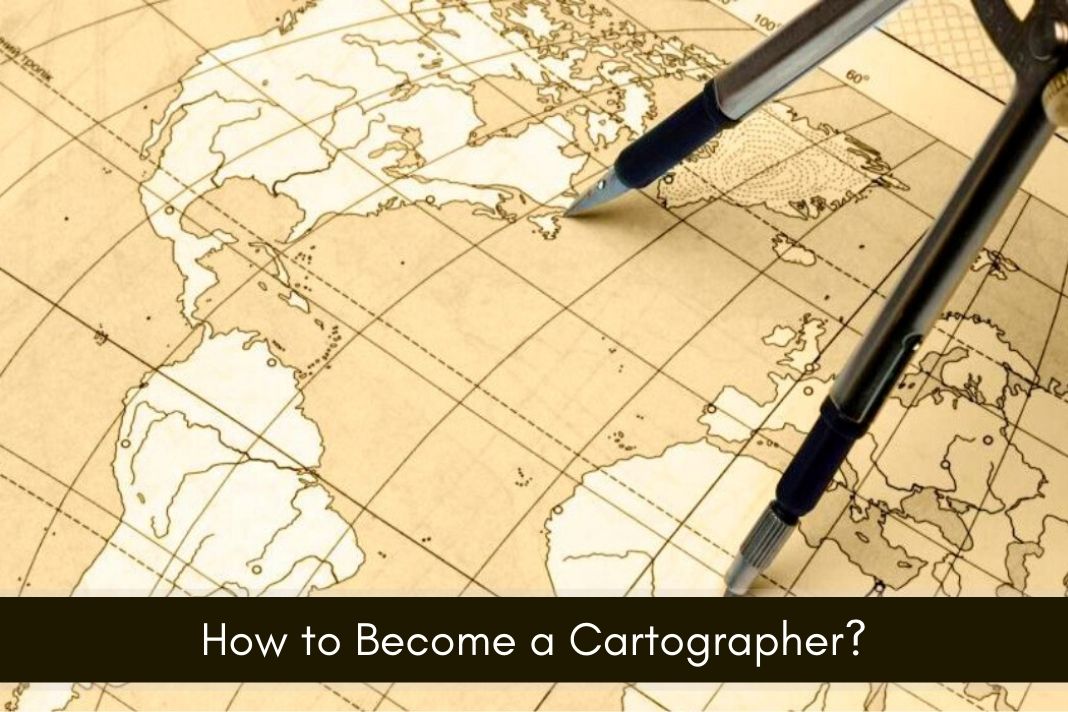
Cartography is a comprehensive field that unites art and science to make maps. All cartographers must be able to visualize data using both analysis and artistic imagination. This is an old occupation that has grown with technology. Nowadays, surveyors, cartographers, photogrammetrists and mapping specialists create significant tools for a comprehensive variety of careers.
From the collection of geographic and physical data of an area, cartographers make maps and charts. Surveyors produce exact measurements of an area so that they can help cartographers in drawing up accurate maps. Cartographers make most maps with computers using specialized mapping software.
Know in detail about the preparation and education required to become a cartographer. Get a quick view of the requirements and details about the degree programs, job responsibilities and state certification to check if this is the career for you. If you have a love for maps and wish to be a Cartographer, below are some steps to become a cartographer.
How to Become a Cartographer in Steps
Step 1: Earn a High School Diploma
High school math courses in algebra, geometry, calculus and trigonometry will equip you with the essential groundwork for a cartography profession. Classes in computer science and drafting can also be helpful. Knowledge of various computer applications is essential for working with Geographic Information Systems (GIS).
Moreover, art classes would help your drawing and graphical representation skills. In order to work as a cartographer, students will typically need a bachelor’s degree. The courses covered in cartography, surveying or geography programs match the skills you will require as a cartographer.
Some of the schools combine cartography with Geographic Info Systems to form one attentiveness. In this program, you can learn about three-dimensional analysis, computer cartography, and remote sensing. Geography programs might emphasize cartography, and these programs are further expected to have practical courses in GIS and computer mapping.
Step 3: Obtain a License
The U.S. Bureau of Labor Statistics (BLS) states that cartographers must become qualified surveyors in specific states. You may want to check with your state to see if it’s among those that do. The National Council of Inspectors for Surveying and Engineering administers the licensing exams as a three-stage procedure.
First, you should pass the “rudiments of surveying” exam that consists of multiple-choice questions, before working with a knowledgeable surveyor. After at least three years of experience, you can take the Practice of Surveyors and Principles exam, which has 100 multiple-choice questions.
Step 4: Obtain Employment
Voluntary certifications normally need experience and education, so you need a good amount of work experience. BLS listed that engineering and architectural industries provided several jobs to cartographers, photogrammetrists and surveyors in 2019. Service is predicted to rise 14% for cartographer’s employees at the time of the 2019-2028.
[Also Read: Everything You Need to Know About Greeting Card Writer]
Cartographer Salary and Working Hours
Cartographers spend a lot of their time in workplaces using computers having monitors, so they could extract scientific information easily and study from aerial photographs. According to the Bureau of Labor Statistics, Cartographers usually work typical office hours however, they will require to work longer hours when meeting publication or project completion deadlines.
- Starting salaries typically range from $20,000 to $29,000.
- With experience, you can earn between $30,000 and $47,000.
- At senior level, you’ll typically earn around $50,000 to $60,000.
Experienced cartographers working on a consultancy basis will negotiate a fee with their client based on their experience and reputation.
Job Description of Cartographer
Cartography has developed as allied occupations have evolved with new technology. Cartography jobs vary widely from the design and development of geographical information to more strategic and technical work. Below are few of job duties of Cartographer
- Cartographers normally do information-gathering to gather and authenticate different kinds of maps. They use cartography tool for spatial analysis. This brings cartography the best career in the modern world.
- Examine and collect geographical data, like demographic characteristics, population density, and annual precipitation designs. Cartographers must even familiarize themselves with the abbreviations and symbols used in mapmaking.
- Accessing and using aerial photographs and satellite images.
- Cartographers would research, collect, store, regain, examine and work on the map –making data related to scientific technology and artistic.
- Make maps in graphic or digital form so that it can be applied for environmental, social, political, educational and business work.
- Study current charts and maps to make adjustments, corrections, and updates
- Cartographers use info from geodetic remote and surveys sensing systems, such as aerial cameras, technologies and satellites like ranging and light-imaging detection.
- Cartographers will also work on prevailing maps, additional records and surveys.
- Capture, maintain and output digital geographic data. (1)
Conclusion:
With the increasing use of satellite technology and the Geographical Information System in almost all walks of life, Cartography is developing to be a more promising career option in recent times than ever before. Want to become a cartographer? Then start your research now!




